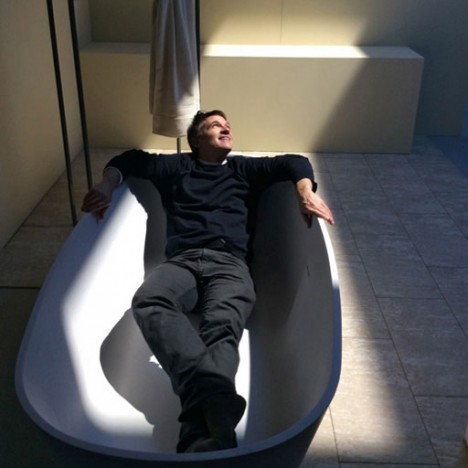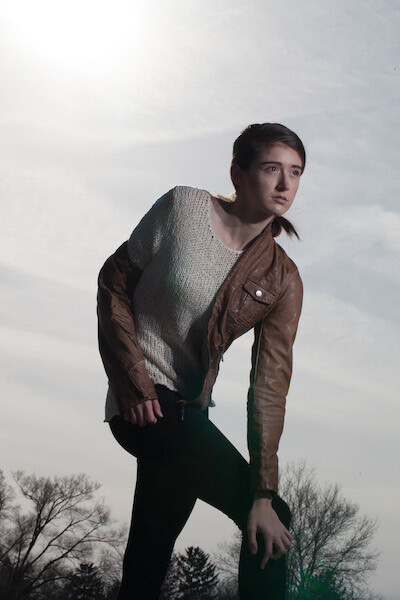The post How to Take Good Pictures in Bright Sunlight: 11 Easy Tips appeared first on Digital Photography School. It was authored by Darren Rowse.

How can you take good pictures in bright sunlight? As you may be aware, harsh lighting can lead to unwanted contrast, blown-out highlights, lens flare, and colors that look overly saturated. (If you’re shooting portraits, direct sunlight can also lead to the “squint factor.”)
So what’s a photographer to do?
It turns out there are simple methods of capturing stunning shots in bright light. You just have to choose your compositions and camera settings carefully – and at times, get a bit creative.

So to discover 11 quick and simple tips for combating problems caused by bright sunlight, read on:
1. Move into the shade
The simplest way to take beautiful images in direct sunlight?
Just move into the shade.
Obviously, this isn’t always feasible – you certainly can’t move an entire seascape! – but with some subjects, heading into the shade is quick and easy. It’s a good solution when shooting portraits, assuming you’re not tied to a particular location.
After all, sometimes the simplest solutions are best!
2. Make your own shade
For small subjects that aren’t movable – for instance, a small flower in a field – create your own shade!
You have a few different options, some more convenient than others:
- Block the light with your body
- Ask an assistant to stand between the flower and the light
- Hold a piece of cardboard or an umbrella above the flower
- Use a pop-up diffuser
Note that some of these options will be more effective depending on the direction of the light (e.g., if the bright sun is directly overhead, it’ll be tough to block it with your own body).
And a diffuser, because it softens the light rather than blocks it, will give you the most balanced, flattering results.

3. Use fill flash
One of the biggest problems with shooting in direct sunlight is the harsh shadows. For instance, portrait subjects will get unwanted shadows under the chin, flowers will get heavy shadows underneath the petals, and pets will get dark shadows under their head and body.
In general, these harsh shadows look bad, but there’s an easy solution:
Fill flash.
Simply point a flash toward the dark shadows and fire away! Make sure the flash is on a low power setting – after all, you don’t want to make the underside of your subject brighter than its top! – and experiment with different flash angles for the best results.
You also might try putting the sun behind your subject, then using the fill flash to brighten up your subject’s front. It can look really good, though watch out for lens flare.
4. Use a reflector
Want to fill in harsh shadows but don’t like using flash?
You have another easy option:
A reflector.
Reflectors are white or metallic items that bounce light back into darker areas, and they’re really easy to use. Simply point the reflector at the area you want to brighten up, then adjust it until you get some nice fill (by angling the reflector back and forth, you’ll see the reflected light change position, and you can use this “preview” to fine-tune the effect).
Note that you can also try the same tactic I mentioned in the previous section, where you position your subject in front of the sun and bounce light back onto their front. A reflector isn’t as powerful as a fill flash, so you’ll need to carefully angle it for maximum effect – but if you get it right, the results will be amazing.

5. Change your perspective
Sometimes, moving your subject into the shade isn’t possible – but moving around your subject can give the same effect.
For instance, if you’re shooting an interesting tree in the forest, you might move to the tree’s other side, you might find an interesting part of the tree that’s shrouded in shadow, or you might get low and shoot up.

The idea is to observe your subject carefully, looking for ways to maximize shade and minimize bright highlights and annoying contrast.
6. Use a lens hood
Suffering from lens flare?
While flare can be artistic, it can also be very annoying, especially if you’re after a clean, straightforward image.
Fortunately, many lenses come with hoods, which block flare-causing light and keep your photos flare-free.

If you don’t have a lens hood, don’t fret; it’s not that difficult to construct a hood out of cardboard or to use your hand to shield your lens from the sun.
(Just make sure you keep your makeshift lens hood and your hand out of the shot – otherwise, you’ll be doing a lot of cropping in post-production!)
7. Consider using a filter

Unfortunately, filters don’t offer a magical solution for bright sunlight – there’s no “avoid direct sunlight” filter, at least not currently – but filters can be handy for direct sunlight photography.
For instance, a polarizing filter will help cut down on reflections, plus it’ll help you achieve vibrant colors (including a beautiful blue sky).
And a neutral density filter will reduce the light hitting your camera sensor, allowing for slower shutter speeds and smaller apertures at midday.
(Why might that be useful? Sometimes, you’ll want to shoot with a wide aperture for the shallow depth of field effect, or you’ll want a slow shutter speed to convey motion blur.)
8. Play with your white balance settings
These days, pretty much every digital camera lets you choose between different white balance settings (for instance, you can dial in a white balance preset, such as Cloudy or Daylight, or you can set a custom white balance based on your scene).
Now, you can adjust the white balance later on in post-processing, assuming you’re shooting in RAW. But if you shoot in JPEG, or you simply prefer to get things right in-camera, you’ll want to carefully set your white balance from the start.
How is this helpful for taking good pictures in bright sunlight?
Well, white balances can offer artistic effects that enhance the look of highlights and shadows. A cooler white balance, for instance, can give a neat effect to more monochrome images – while a warm white balance will make bright sunlight appear softer and more inviting.
9. Use spot metering for the best results
Harsh sunlight makes correct metering tricky. So here’s my advice:
Use spot metering. This will force your camera to expose based on a targeted portion of your scene; you can aim at your main subject, then dial in the recommended exposure settings.

Alternatively, you can spot meter off a midtone in your shot – this will ensure the entire scene is exposed relatively well (as opposed to the former technique, which will ensure you expose for your subject).
After taking an image, check the back of your camera for a preview; you may need to adjust your technique depending on the result. Here, your histogram can be very handy, especially because it’s tough to accurately evaluate an LCD preview in bright sunlight.
Also, if you have the luxury of time, try metering off different parts of the scene while taking multiple shots – that way, you can choose the best option later on.
10. Carefully choose the time of day you shoot
Most of us don’t have the luxury of sitting around all day waiting for the perfect light.
But heading out an hour or two earlier or waiting until an hour or two later might be feasible – and if that’s manageable, I highly recommend you consider it.
You see, the time of day can dramatically impact your shot. Midday offers unpleasant, harsh light, but if you go out in the early morning or late afternoon, even direct sunlight starts to look good. You’ll lose the unwanted contrast, you’ll lose the ugly shadows, and you’ll get soft, golden light that’ll flatter your subjects.
Make sense?

11. Shoot silhouettes
As the saying goes:
If you can’t beat ’em, join ’em!
And that applies when photographing subjects in bright sunlight. If the sun is causing you problems, just use it to your advantage; make your subject stand in front of the bright light, then capture stunning silhouettes all day long.
I recommend getting down low (so that you’re shooting against the bright sky). And compose so your subject is clearly defined against the background.

How to take good pictures in bright sunlight: conclusion
Well, there you have it:
Eleven easy tips for shooting in bright sunlight.
Capturing beautiful photos in harsh light might seem difficult – but remember these tips, and your photos will turn out great!
Now over to you:
Do you struggle to shoot in bright sunlight? Do you have any tips or tricks for dealing with these issues? Share your thoughts (and images) in the comments below.

The post How to Take Good Pictures in Bright Sunlight: 11 Easy Tips appeared first on Digital Photography School. It was authored by Darren Rowse.































 In the last week on dPS we’ve posted a couple of tutorials that focus upon the ‘Sun’ in different ways with our posts Using the Sun as a Compositional Element and How to Use Sunset Light to Light Portraits.
In the last week on dPS we’ve posted a couple of tutorials that focus upon the ‘Sun’ in different ways with our posts Using the Sun as a Compositional Element and How to Use Sunset Light to Light Portraits.
You must be logged in to post a comment.